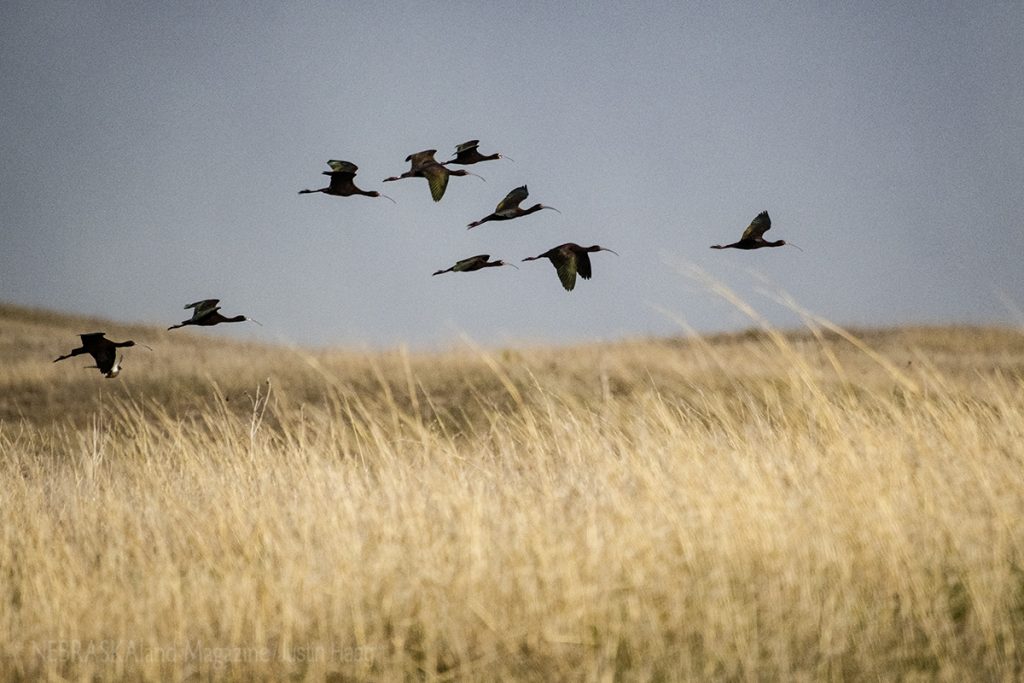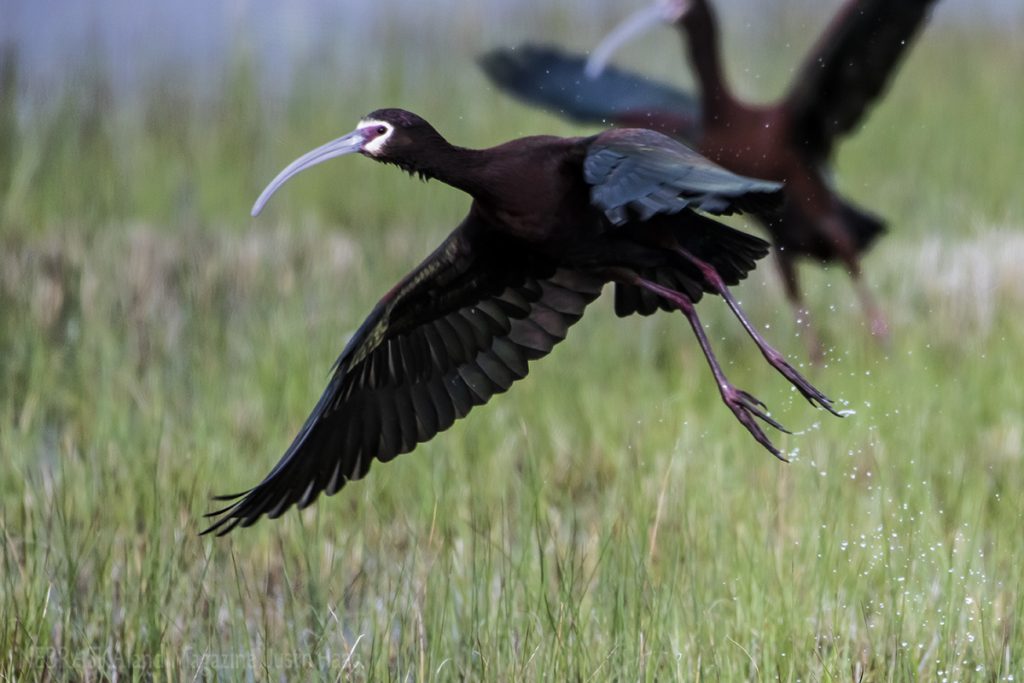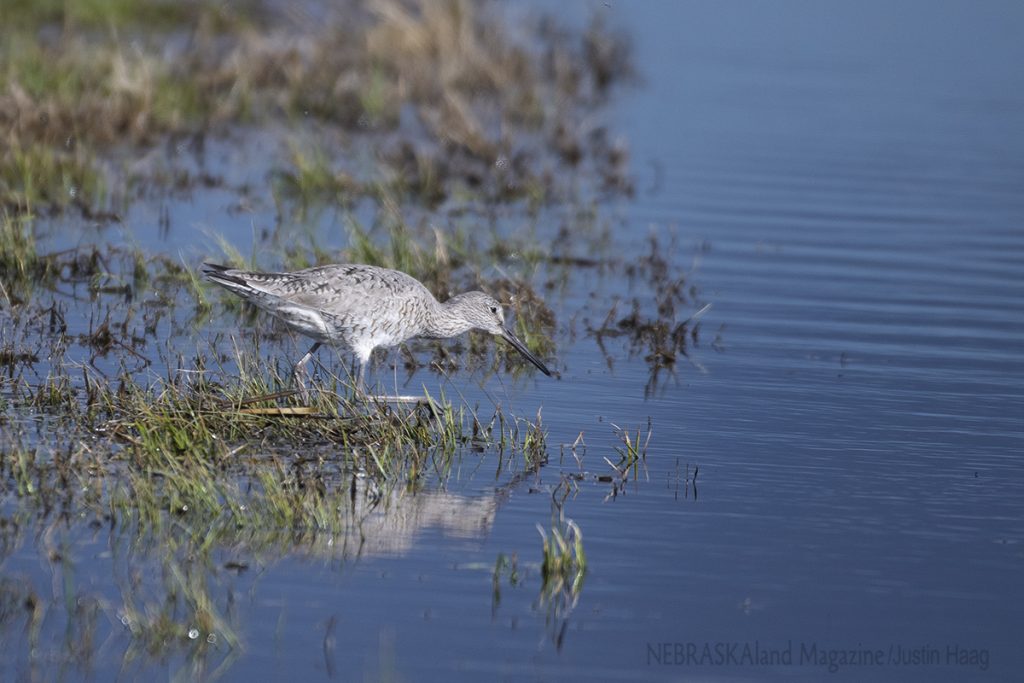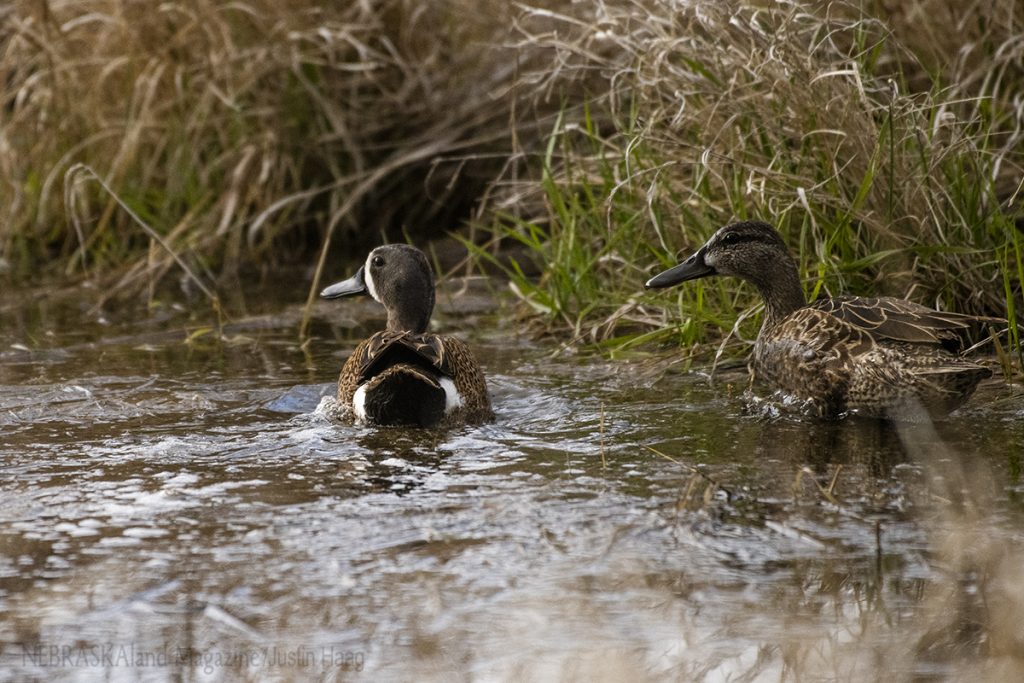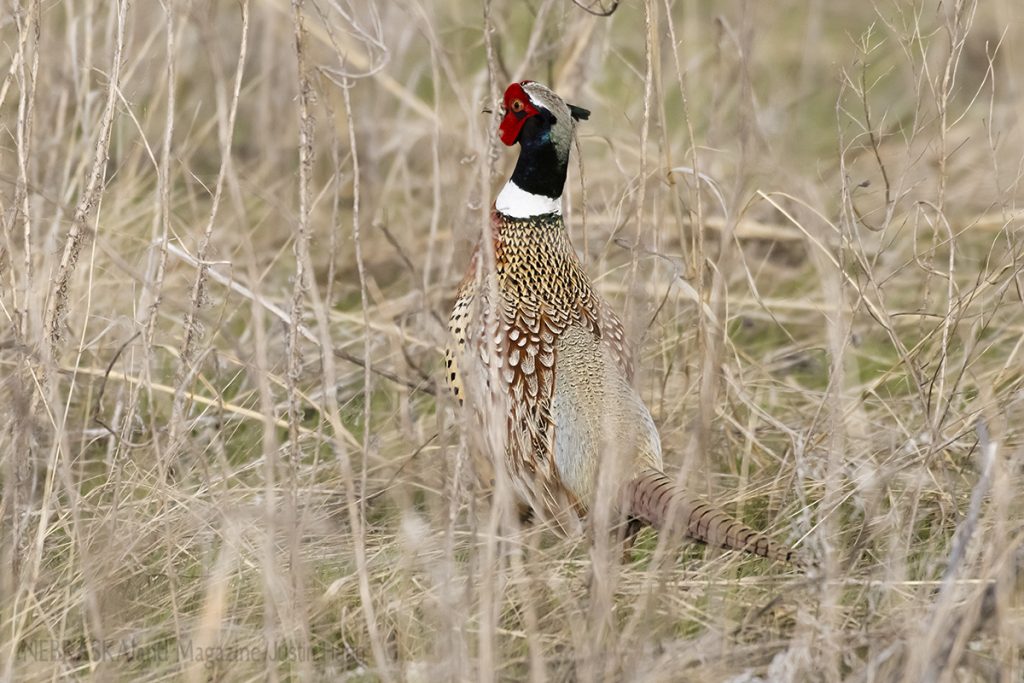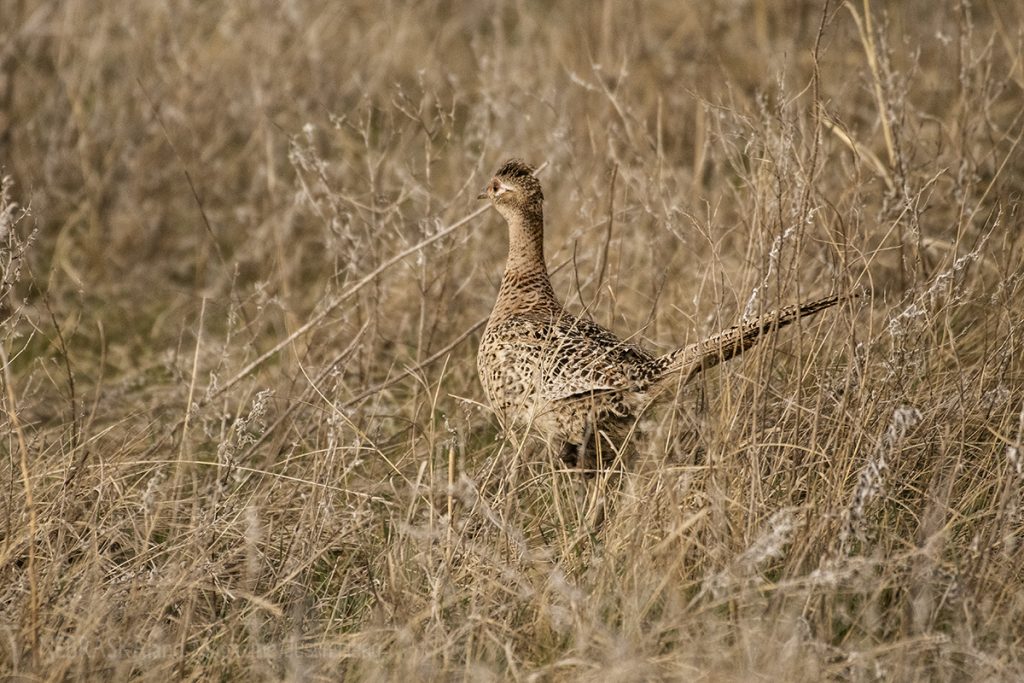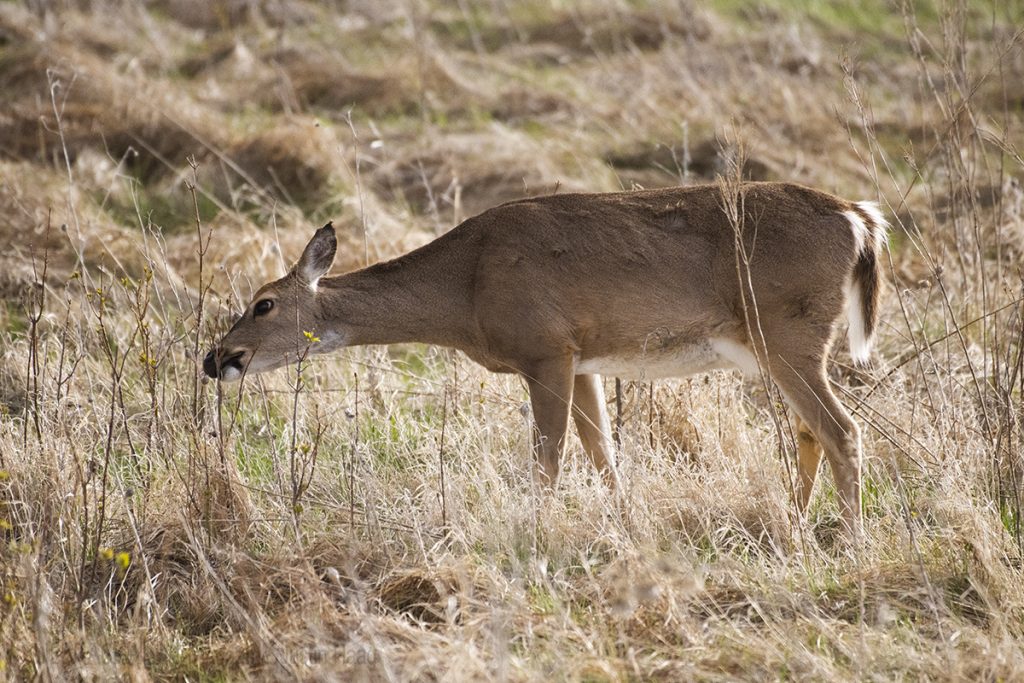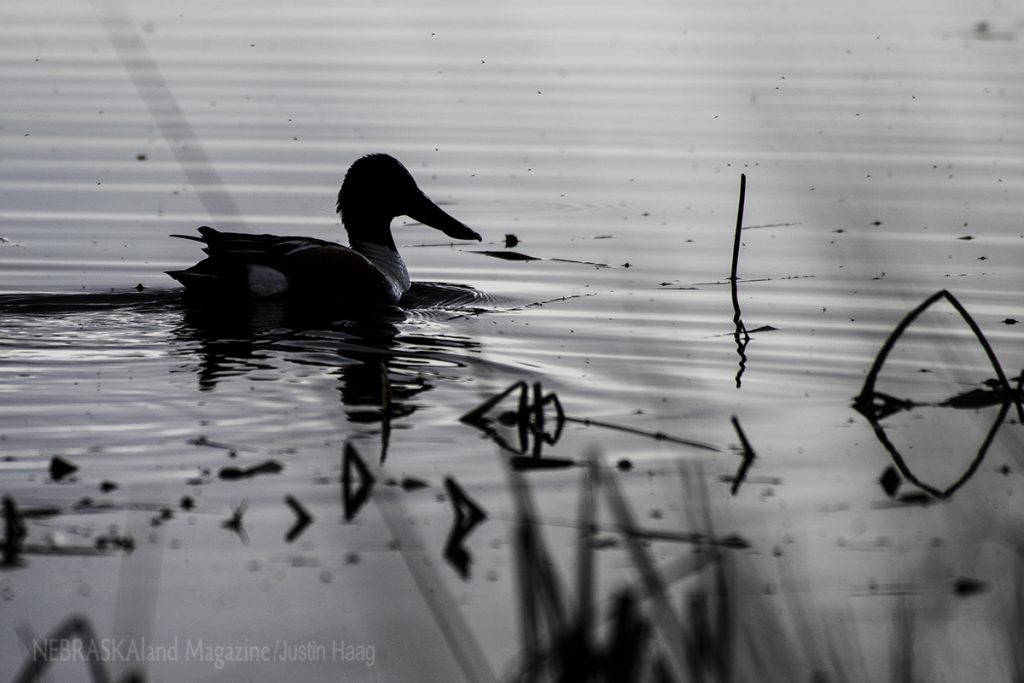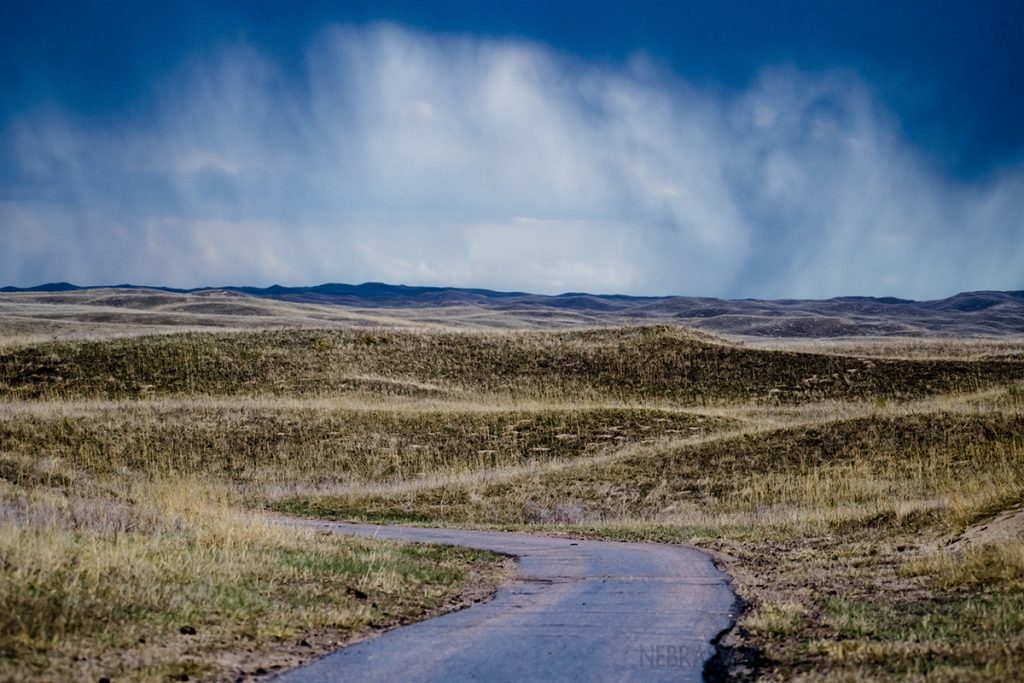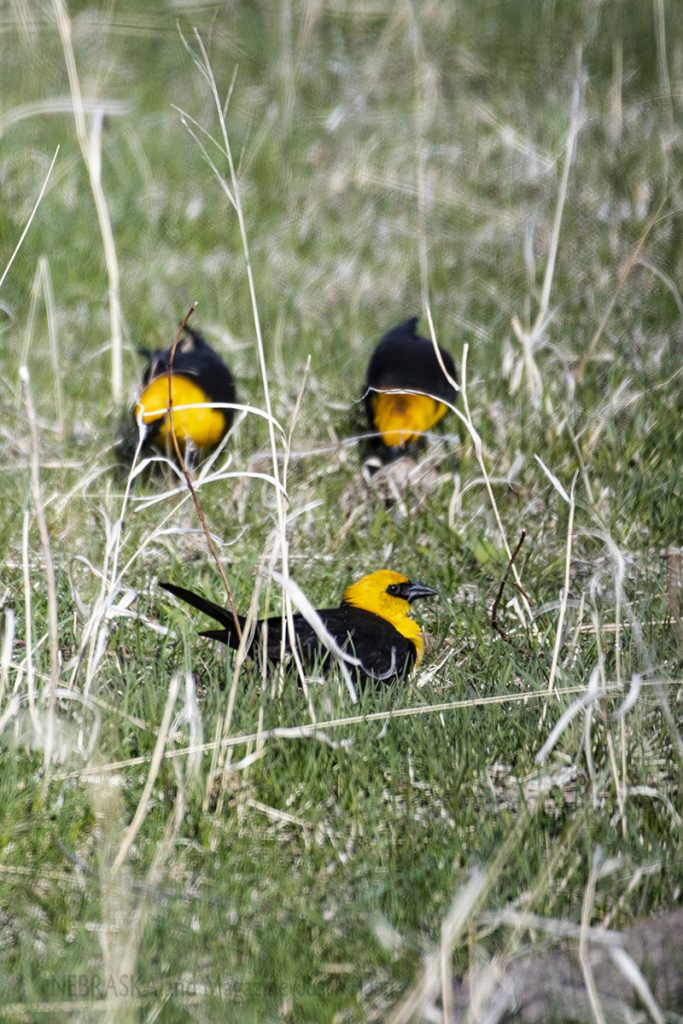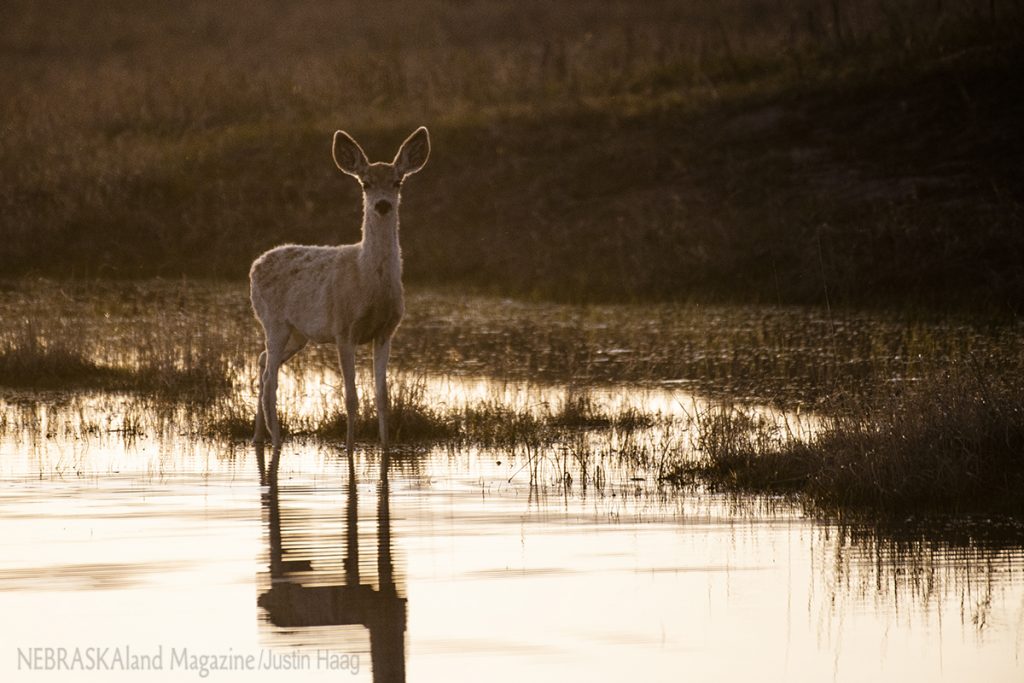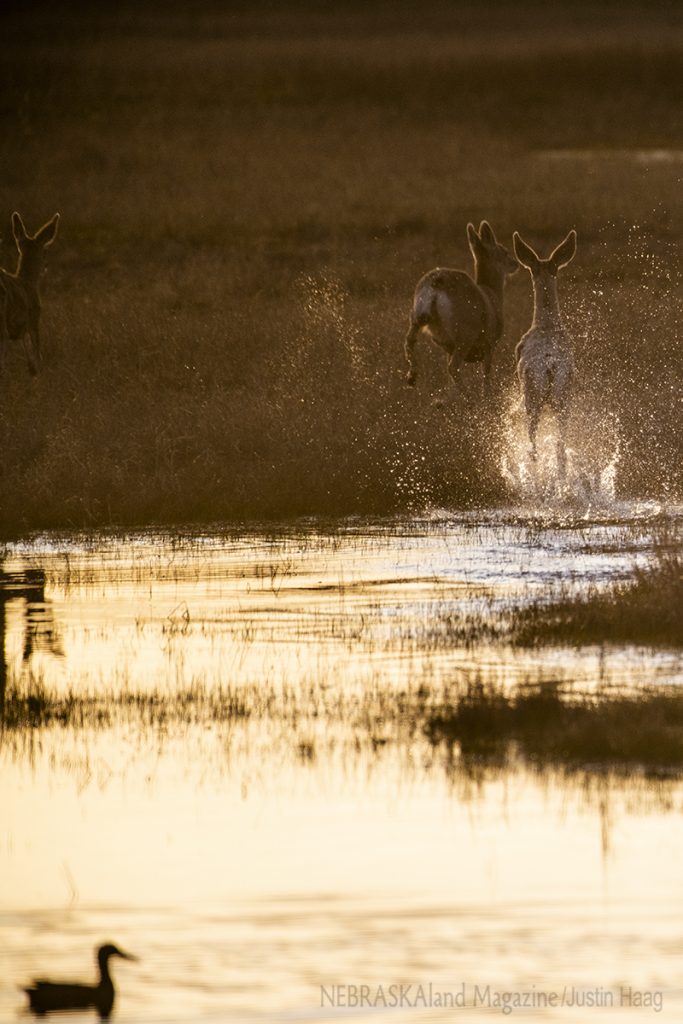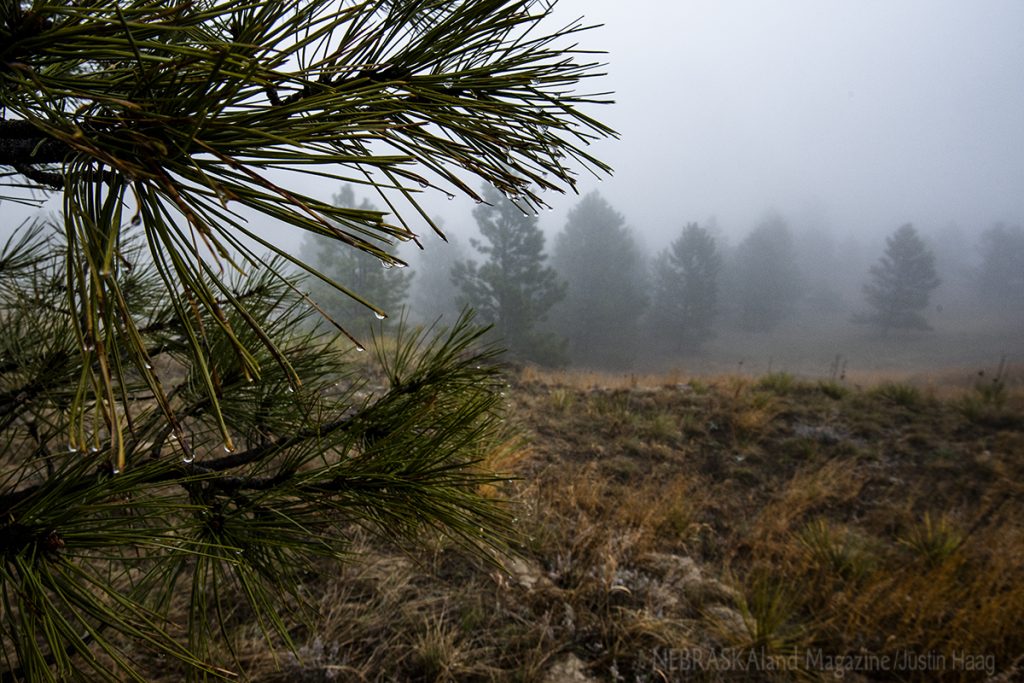This is always an especially great time of year to visit the Sandhills, with the landscape greening up and diverse wildlife in abundance. Anyone wanting to do so had better check conditions before going, though. On May 2, I decided to drive the slow road through the Crescent Lake National Wildlife Refuge from Oshkosh to Lakeside. Once I got to the refuge, I found the road under water in several places and decided to backtrack southward, making for a much longer journey than I had planned. A look at the area’s wildlife was worth the trouble, though.

Just to give you an idea of how much water was on the refuge, here’s the display that greets visitors on its south side.
The white-faced ibises (Plegadis chihi) are present in great numbers and seem to be at home wading in all that water.
As does this willet (Tringa semipalmata).
These blue-winged teal (Anas discors) are surely busy producing future photo subjects for me.
I even found a few wild turkeys (Meleagris gallopavo) there.
And ring-necked pheasants (Phasianus colchicus).
Not far from that hen pheasant was this sharp-tailed grouse (Tympanuchus phasianellus).
This white-tailed deer (Odocoileus virginianus) didn’t let my presence interrupt dinner.
Some birds are difficult to identify when backlit. The distinct bill of the northern shoveler (Anas clypeata) is hard to mistake, however.
Distant rain served as a nice backdrop for the Sandhills, even if it created some mud for the drive.
Yellow-headed blackbirds (Xanthocephalus xanthocephalus) are colorful enough that one might consider changing their names to “black-bodied yellow birds.”
The day could not have ended much better than it did with this splashing mule deer (Odocoileus hemionus) at sunset.
Speaking of water, things were damp with dense fog in the upper elevations of Fort Robinson State Park during my visit there May 6.
Plains phlox (Phlox andicola) has a way of brightening the day, though.
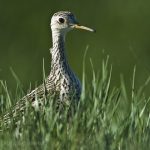 Usually, upland sandpipers (Bartramia longicauda) are easily identified with their skinny necks (as at left). This one near Whitney made me do some checking to make sure I pegged it for the right species, though. A bird expert confirmed my ID and said it was probably trying to conserve some warmth by tucking its head close to its body. With the temperature below 40 degrees F and water dripping from its breast, it may have been longing for days in South America where it spent its winter. Or, perhaps it is looking forward to some warmer days on the High Plains, as I am.
Usually, upland sandpipers (Bartramia longicauda) are easily identified with their skinny necks (as at left). This one near Whitney made me do some checking to make sure I pegged it for the right species, though. A bird expert confirmed my ID and said it was probably trying to conserve some warmth by tucking its head close to its body. With the temperature below 40 degrees F and water dripping from its breast, it may have been longing for days in South America where it spent its winter. Or, perhaps it is looking forward to some warmer days on the High Plains, as I am.
The post Northwestern Exposure: Taking refuge appeared first on Nebraskaland Magazine.



